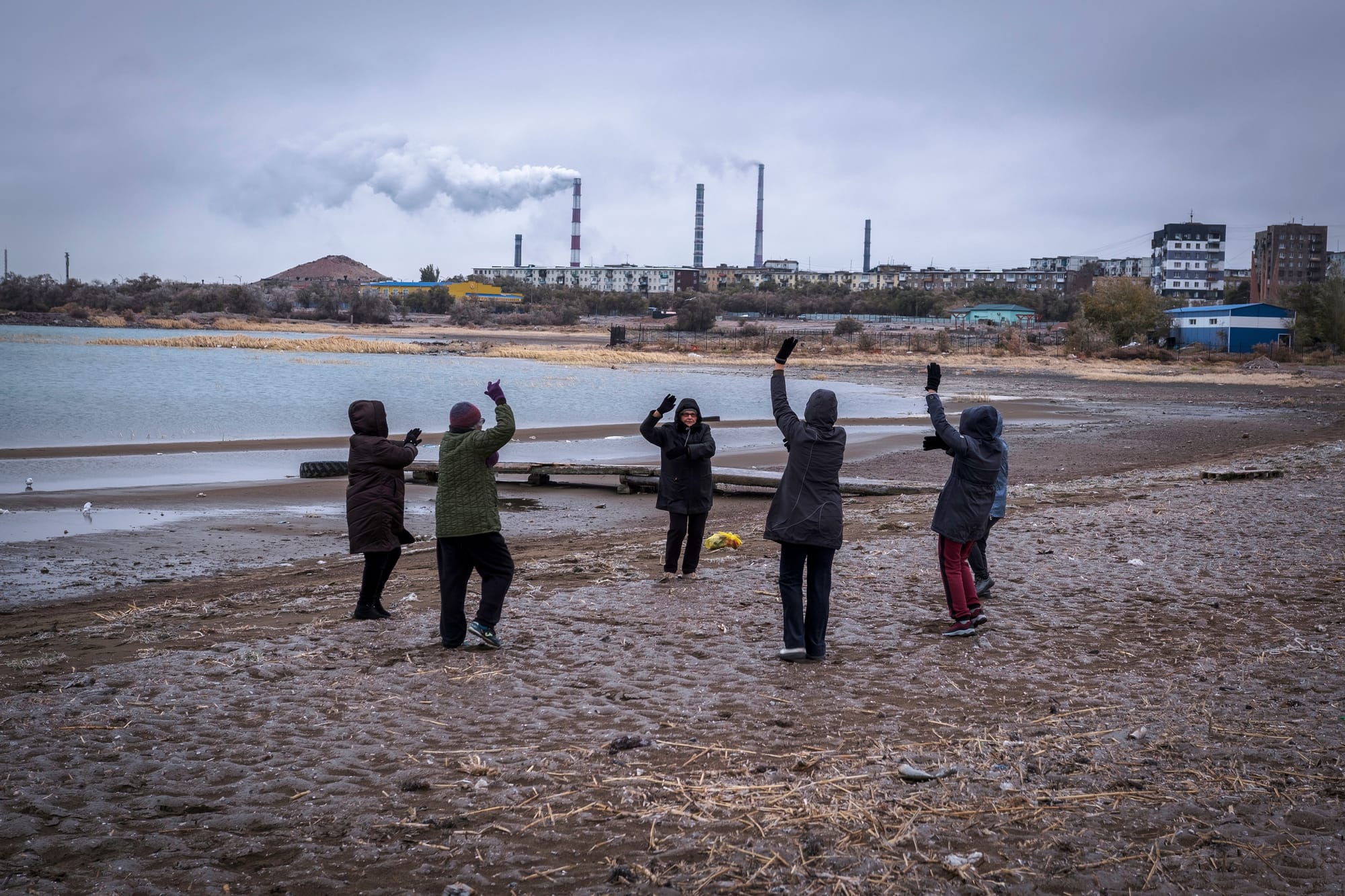Kazakhstan’s shrinking lakes

Lake Balkhash, Kazakhstan’s largest lake, is facing a crisis that threatens its very existence. Increased economic activity in China’s Xinjiang province, where the Ille River – which provides 80 per cent of the water to Balkhash – originates, is reducing water flows. This, combined with increased evaporation due to climate change, overfishing and pollution from nearby mines, has led scientists to fear that Balkhash could disappear in the next 20 years, following a similar trajectory to that of the Aral Sea.
As the lake shrinks, some 40 endemic animal species and 240 plant species also risk being wiped out, many of which are vital for the livelihood of the 3.3 million people who call this ecosystem home. What’s more, the proposed construction of a nuclear plant on the lake’s shores, aimed to address the growing energy needs of the country, could further contribute to its disappearance. Nuclear reactors requir huge quantities of water to operate.
‘If this fragile ecosystem is impacted by the nuclear plant, it will not survive,’ says Aigerim Kapar, the co-founder of Artcom Platform, a group of local artists trying to raise public awareness about the looming environmental crisis. ‘We cannot extract all the [resources] from the lake that we want. We have to care and protect the ecosystem.’
Despite the threats, Kazakhs largely support plans to build a nuclear power plant, with more than 70 per cent of voters backing the move in a national referendum in October 2024. Aigerim says there has been a lack of coverage in the local media about the risks to the lake. This makes their small campaign all the more important, says Aigerim, adding: ‘I have hope for the future of the lake. We should keep going to resist.’
— Omar Hamed Beato
💧 Find out more about the threats to Balkhash Lake's survival
🎨 Explore Artcom Platform's projects and exhibitions
📰 Read more on how artists in Kazakhstan engage with climate issues
✊ Support the work of Balqashqa Qamqor (Care for Balkhash)
Like what you've read? Support us with a tip.
Are you a freelancer? Pitch us a story.
Looking for more? Listen to our podcast The World Unspun
Subscribe to New Internationalist magazine and get Currents absolutely free!

